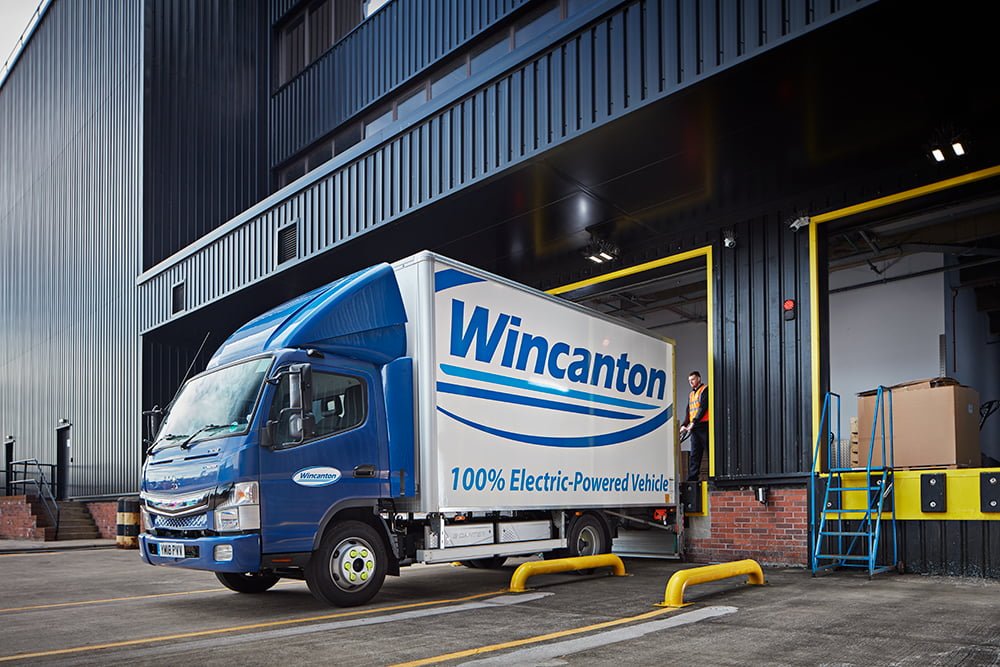Our Head of Development for Digital & eFulfilment, Andrew Turner, explores some of the most effective measures and approaches retailers can adopt through the remainder of the COVID-19 pandemic to maximise efficiency and boost customer satisfaction.
Three essential COVID-19 eCommerce delivery adaptations for retailers


COVID-19 has been a challenge for us all. Everyone across the UK has been impacted by the outbreak of the virus in some way and has had to alter their lifestyle to protect themselves, their families and loved ones, and society as a whole.
During the restrictions, many essential businesses continued to operate. It’s been important to keep vital items available for key workers and consumers in need of goods to perform essential practices. This was reflected by the Government’s early decision to keep retailers in certain sectors open - in an online capacity, at least.
This activity kept the country moving, but presented unique challenges that Wincanton has been responding to on the frontline on a daily basis. Its Digital & eFulfilment team partners with some of the country’s leading retailers, operating distribution centres, nationwide transportation networks and home delivery services; all of which are services that consumers have called upon in some form since late March.
Although the COVID-19 pandemic has passed its peak, the way we have learnt to live will remain for the foreseeable future. Social distancing guidelines are set to stay in place for much of 2020 (and possibly beyond), so retailers need to change how they operate. Responsible services that work for customers but, at the same time, protect staff are critical.
As Wincanton has responded effectively to the situation, here are three measures that will help retailers operate effectively over the coming months.
Reduced stock lines for reduced pressure
The increased shift to online shopping throughout the COVID-19 pandemic is not a surprise. Research from the Office of National Statistics showed that in March and April, 22.3% of all UK retail transactions were online.
The quick shift added strain for distribution and fulfilment centres supporting eCommerce operations. This was amplified by social distancing measures, the increased need for strict hygiene routines and reductions in numbers across workforces.
Working with one of our major customers, we reduced the range of items available on virtual shelves by up to 90% for some product lines. By stripping back to ‘core’ products, and reducing variations among orders, online stock availability remained high.
This was effective for consumers, who saw fewer ‘out of stock’ messages; and for staff working to fulfil orders, as the pressure of high SKU variations dropped.
Our advice: Reduce stock lines where possible to ease order fulfilment pressure and prevent consumer frustration.
Greater flexibility in the final mile
While many online transactions have been for groceries and smaller items, a portion of eCommerce retail has included large items that require a bespoke delivery option. Wincanton’s industry-leading two-person home delivery service fills this vital area of the market, making circa 1.5 million deliveries to customers’ homes every year and often assembling large pieces in the room of choice.
As the impacts of COVID-19 worsened, this service faced unique challenges. To safeguard both customers and our colleagues, we introduced measures to minimise interactions. These alterations included increased screenings of customers to find out if they were self-isolating or vulnerable, technicians working consistently with a single colleague as much as possible, and reduction of the service to doorstep delivery only.

Through April we noticed that 65% of customers opted for doorstep delivery over the room of choice option, ensuring a contactless delivery. With social distancing likely to be in place for some time, this optional alteration is a smart one for retailers looking to provide the service consumers feel most comfortable with.
Our advice: Offer customers greater choice around the method of delivery and ensure effective communication.
Full visibility across the returns process
While much of the focus in eCommerce operations is getting the items into the hands of consumers, the returns element of the process can be a differentiator. In normal circumstances this process is challenging for retailers, with research from GlobalData suggesting that the total value of returns in the UK could reach £5.6 billion by 2023.
A wise way for retailers to prepare for this is to adopt technology-enabled processes to track returns at every step of their journey and reduce items’ time off of virtual shelves. This requires knowing when and how returns are coming, with capturing when a return has been requested by a customer an essential checkpoint. An effective way to monitor this is to provide a return parcel label that is triggered at the drop-off point – this way the daily volumes of the ‘tech-enabled’ returns are known and warehouse resources can be allocated accordingly.
Our advice: Partner with a provider that’s able to offer full visibility throughout the returns process.
READ MORE ABOUT WINCANTON’S INDUSTRY-LEADING HOME DELIVERY SERVICE
